Photo gallery An up-close look at climate coverage
Last week, University of Wisconsin–Madison students and researchers and members of the broader Madison community heard firsthand the importance of local journalism, especially when it comes to climate coverage.
From Oct. 14-16, Great Lakes climate solutions reporter Isabelle “Izzy” Ross visited journalism classes, met with experts in clean energy and learned about Madison’s (and arguably the world’s) most studied lake, Lake Mendota. As this semester’s Sharon Dunwoody Science Journalist in Residence, Ross shared insight into her work as a reporter for both a Northern Michigan radio station, Interlochen Public Radio, and Grist, a digital climate solutions magazine with a national audience.
On October 15 during the Wisconsin Science Festival, she gave a public talk at a flash talk-art fusion event, Big Ideas for Busy People: Fields of Wonder. Whether she was on stage at the Majestic Theatre, in the middle of Lake Mendota, or fielding questions in a room full of public affairs and journalism students, Ross shared the importance and value of building trust with the community you report in and for.
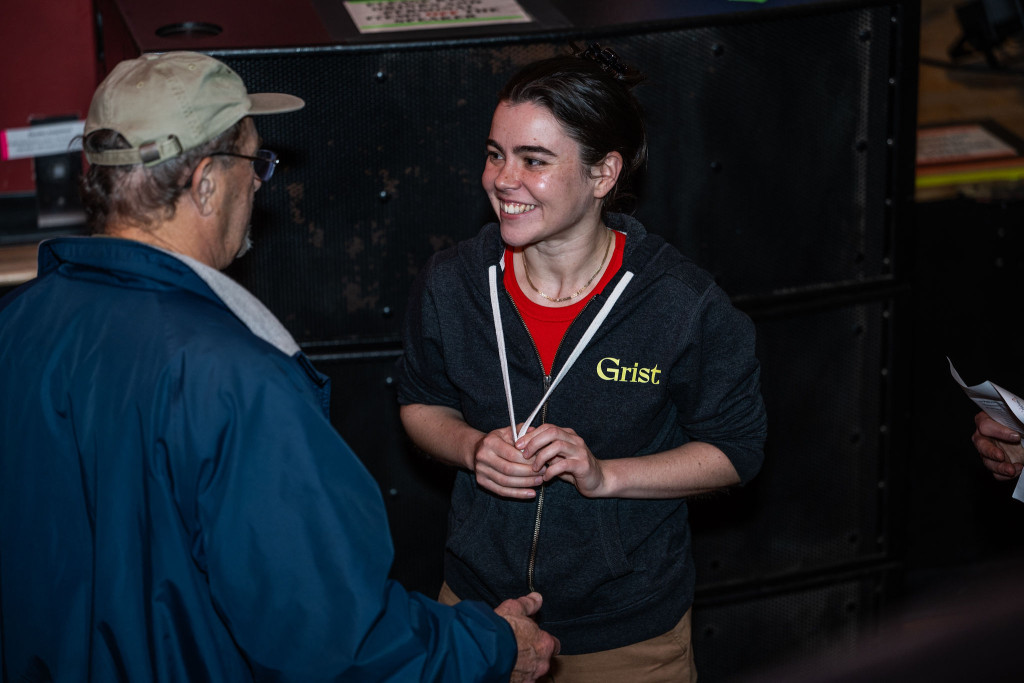
Isabelle “Izzy” Ross speaks with an attendee of the flash talk and arts celebration, Big Ideas for Busy People: Fields of Wonder, where she spoke to the public about her approach to climate solutions coverage and the importance of local journalism. Photo by ArrowStar Photography
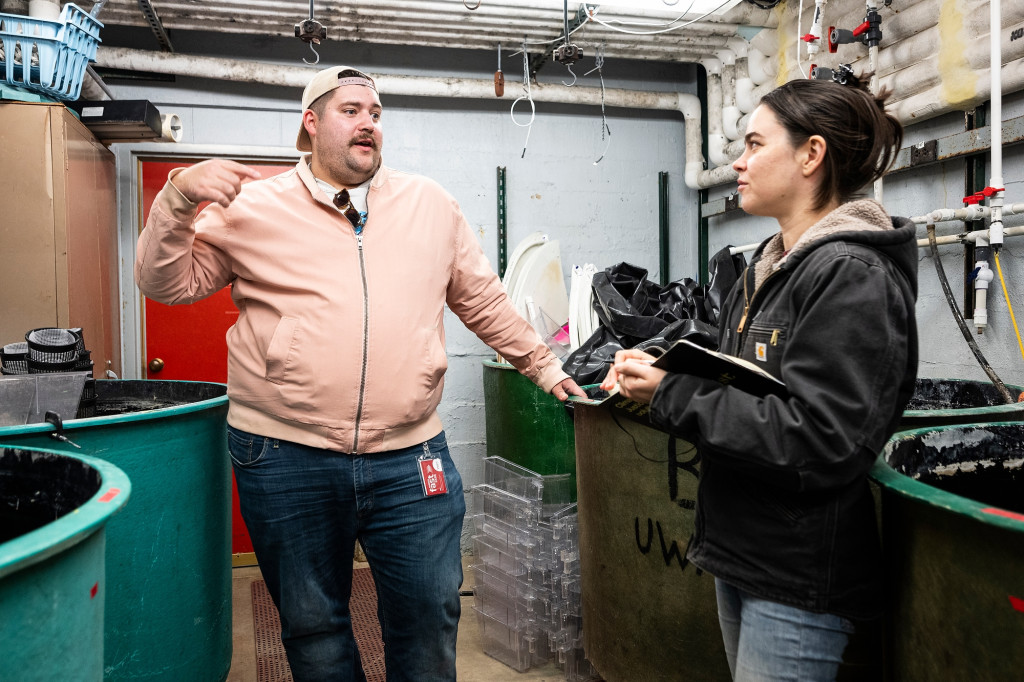
At left, post-doctoral researcher Tyler Butts describes an overview of limnology research at UW–Madison as Ross takes notes while touring research facilities in the Water Science and Engineering Laboratory. Butts, who researches invasive species like zebra mussels, explains how they use the large tanks around them for various studies. Photo by: Jeff Miller
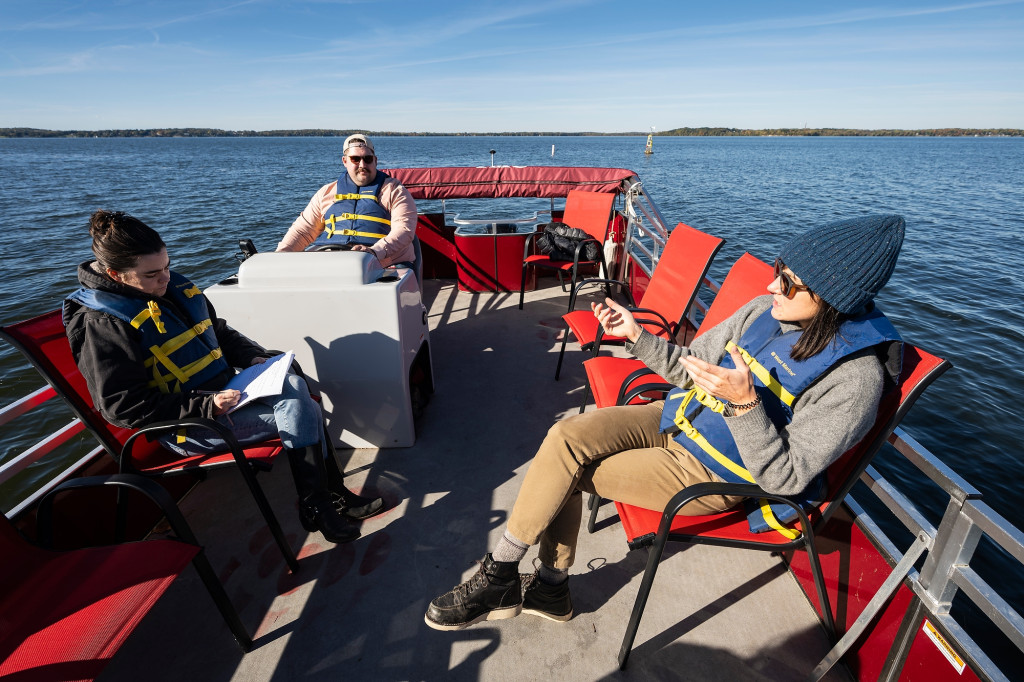
Butts, who is also captaining the pontoon boat, shares with Ross that Lake Mendota is one of the most studied lakes in the world. Hilary Dugan (right), associate professor of integrative biology, also shares some of her recent research that considers the environmental and societal consequences of loss of lake ice. Photo by: Jeff Miller
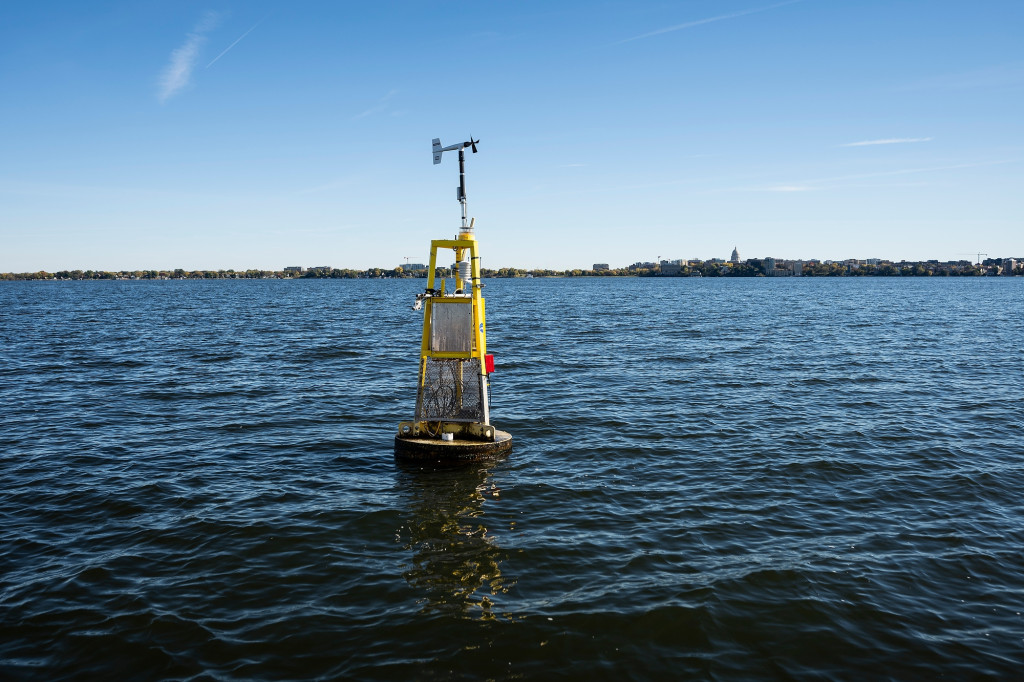
Ross even meets “David Buoy,” an anchored weather buoy, managed by the UW–Madison Department of Limnology and affectionately nicknamed after musician and singer David Bowie. The buoy floats above a deeper section of Lake Mendota and includes a 22-meter string of water-temperature sensors positioned every meter. Photo by: Jeff Miller
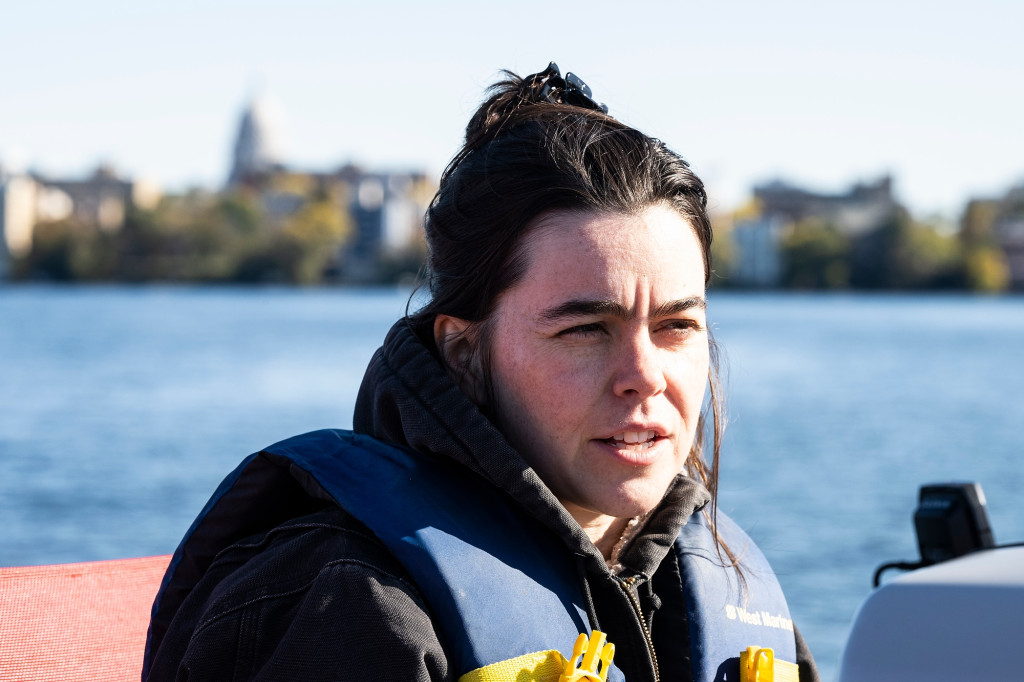
With the Wisconsin State Capitol rising from the Madison skyline behind her, Ross learns that limnology research doesn’t stop when the lakes freeze over. As Butts and Dugan explain, “David Buoy” will eventually be swapped out for other equipment that can continue measuring all sorts of data from the lake through the winter months. Photo by: Jeff Miller
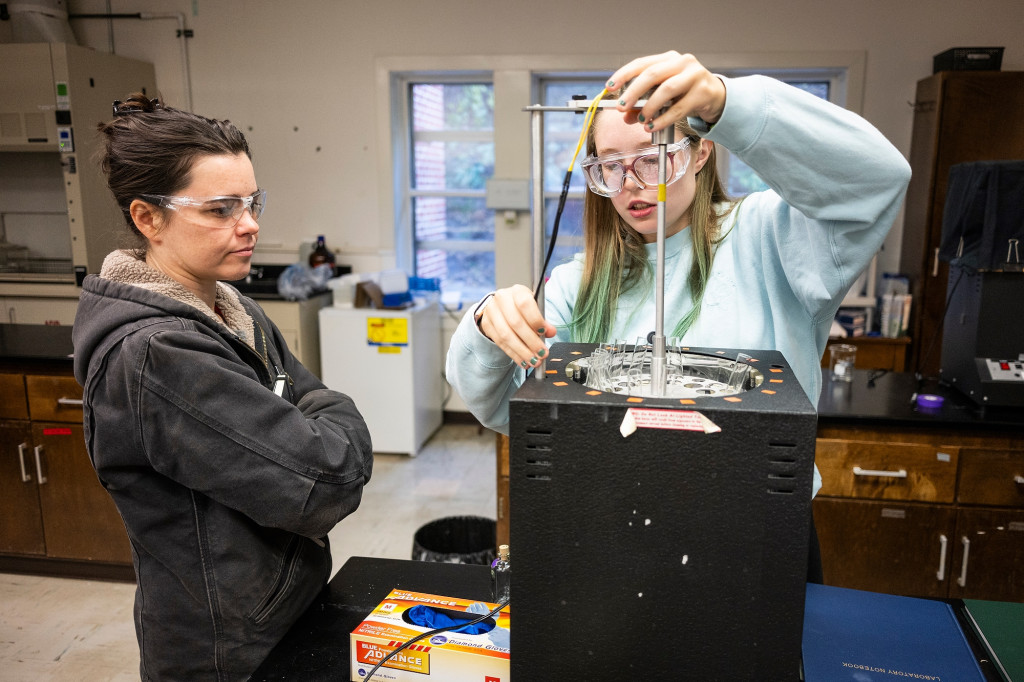
At left, Ross listens to Samantha Summerfield, a PhD student in environmental chemistry & technology, talk about their PFAS (polyfluoroalkyl substances) research in Christy Remucal’s aquatic chemistry lab. Photo by: Jeff Miller
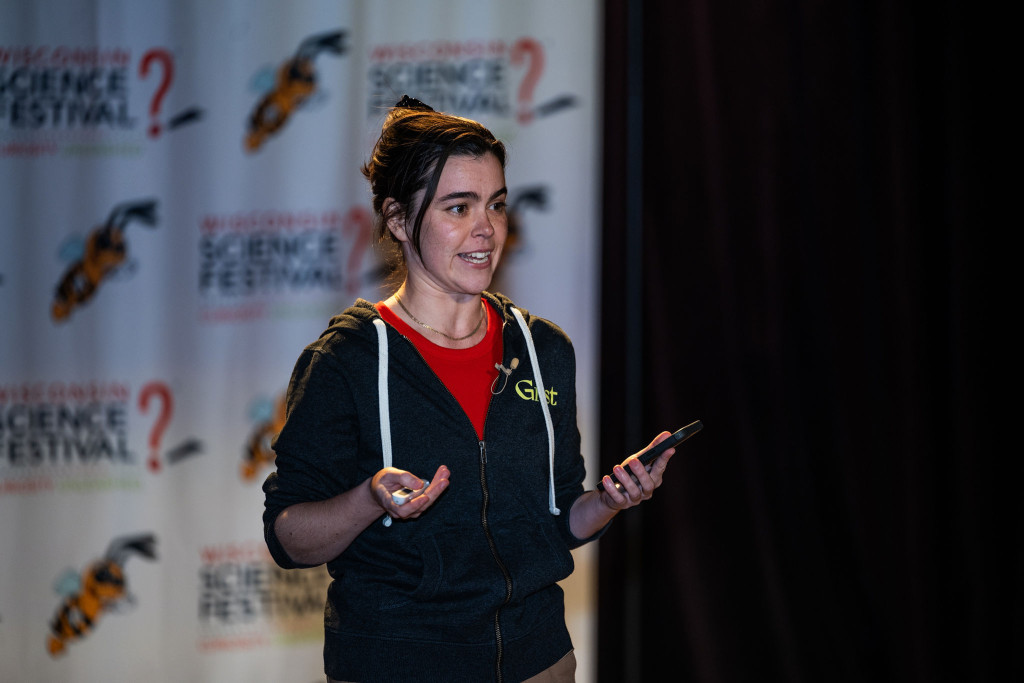
During the Wisconsin Science Festival’s Big Ideas for Busy People: Fields of Wonder event, Ross took the stage with several scientists and communicators to give an entertaining but informative line-up of flash talks to the Madison public. The science-focused talks were interspersed with artistic performances like dance and fiddle music. Ross focused on the importance of local climate reporting and building relationships with communities to learn about the climate issues they face – and care about – in their everyday life. Photo by ArrowStar Photography
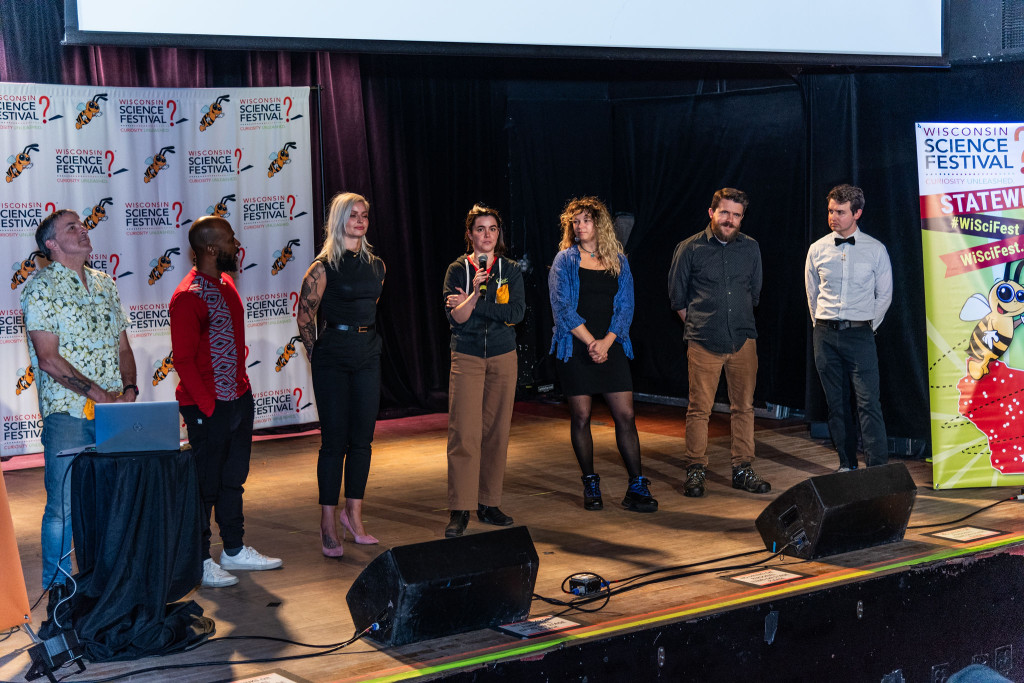
During a lively Q&A session, Ross (center) answers an attendee’s question about the importance of local journalism in a time when people also face the ever-present flood of information from social media platforms. Photo by ArrowStar Photography




